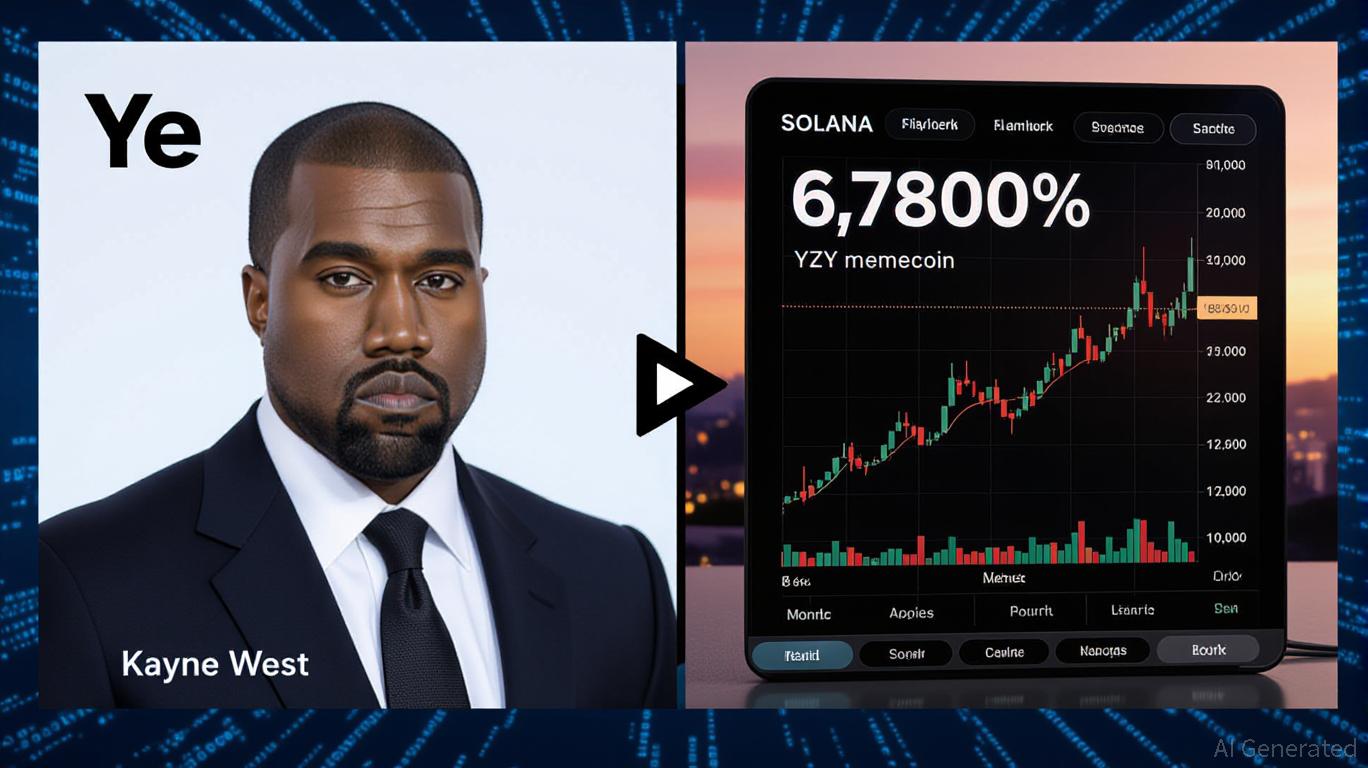
The rise of celebrity-backed memecoins has become a peculiar phenomenon in the cryptocurrency market, blending cultural influence with speculative frenzy. At first glance, these projects appear to democratize finance, offering retail investors a chance to partake in the wealth of pop icons. Yet, beneath the surface lies a structural quagmire of centralization, insider dominance, and regulatory ambiguity. The case of YZY, the memecoin launched by Ye (formerly Kanye West), epitomizes these risks and serves as a stark warning for investors.
Centralization as a Structural Flaw
YZY’s tokenomics structure is a masterclass in centralization. According to leaked data, 70% of its supply is allocated to Ye personally, with over 90% controlled by six wallets linked to insiders. This concentration of ownership is not merely a governance issue but a fundamental threat to market integrity. Unlike decentralized protocols, where token distribution reflects community participation, YZY’s design resembles a private equity offering masquerading as a public asset. The result? A system where insiders can manipulate liquidity, trigger sell-offs, or abandon the project entirely, leaving retail investors to absorb losses.
Historical precedents reinforce this pattern. The TRUMP memecoin, which granted 80% of its supply to a Trump-linked entity, followed a similar trajectory—soaring on hype before collapsing as insiders offloaded their holdings. Similarly, Cardi B’s WAP token, launched in 2024, was linked to wallets with a history of rug pulls, raising alarms about its legitimacy. These cases highlight a recurring theme: celebrity memecoins often prioritize short-term gains for insiders over long-term value creation for the public.
Market Manipulation and the Illusion of Utility
YZY’s launch in August 2025 was a textbook example of engineered volatility. Within 40 minutes, its price surged 6,800%, only to plummet by two-thirds by day’s end. On-chain analysis revealed that insiders controlled liquidity pools, enabling them to manipulate price dynamics at will. One wallet, for instance, flipped 1.29 million YZY tokens for a $1.5 million profit within hours, undermining anti-sniping measures designed to protect retail traders.
The token’s purported utility—facilitating purchases on Ye’s Yeezy brand and powering a crypto payment processor (Ye Pay)—remains speculative. Unlike decentralized platforms that rely on network effects, YZY’s value is tethered to Ye’s cultural capital, a volatile asset in itself. This lack of technical or economic fundamentals makes it susceptible to rapid depreciation, as seen in the 94% collapse of fan-made imitators like Yeezy Coin (4NBT) following YZY’s launch.
Regulatory and Ethical Concerns
Regulators have increasingly scrutinized celebrity-backed tokens for their resemblance to unregistered securities. The U.S. Securities and Exchange Commission (SEC) has already taken action against figures like Kim Kardashian and Floyd Mayweather for undisclosed compensation in crypto promotions. YZY’s structure—where insiders profit disproportionately from retail hype—raises similar legal questions. The SEC’s focus on market manipulation and investor protection suggests that projects like YZY could face enforcement actions if they fail to disclose risks or adhere to securities laws.
Ethically, these tokens exploit the trust of fans, who are often less equipped to assess the risks of speculative assets. The WAP token, for instance, was linked to Sahil Arora, a promoter with a history of fraudulent schemes. In such cases, celebrities often disavow responsibility, shifting blame to third parties. This pattern underscores the need for stricter disclosure requirements and accountability in social media-driven promotions.
Investment Advice for Retail Investors
For retail investors, the lesson is clear: celebrity endorsements do not equate to sound investments. The allure of associating with a cultural icon can cloud judgment, leading to overexposure in assets with no intrinsic value. Investors should prioritize projects with transparent tokenomics, decentralized governance, and verifiable utility.
- Due Diligence: Scrutinize token distribution models. A healthy project typically allocates less than 20% of its supply to insiders.
- Regulatory Compliance: Avoid tokens that lack clear disclosures or are promoted without proper risk warnings.
- Diversification: Limit exposure to speculative assets, treating them as high-risk bets rather than core holdings.
Conclusion
YZY’s collapse is not an anomaly but a symptom of a broader issue in the crypto market. Celebrity-backed memecoins, with their centralized structures and reliance on hype, are inherently prone to volatility and abuse. While they may offer fleeting gains for insiders, they pose systemic risks to retail investors. As regulators sharpen their focus on market integrity, the onus is on investors to approach these projects with skepticism and caution. In a market where narratives often outpace fundamentals, the only sure bet is to avoid the illusion of free money.